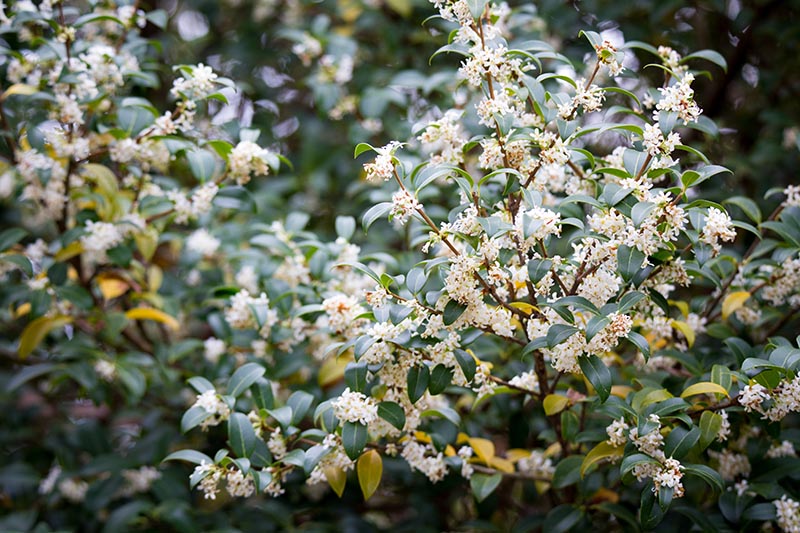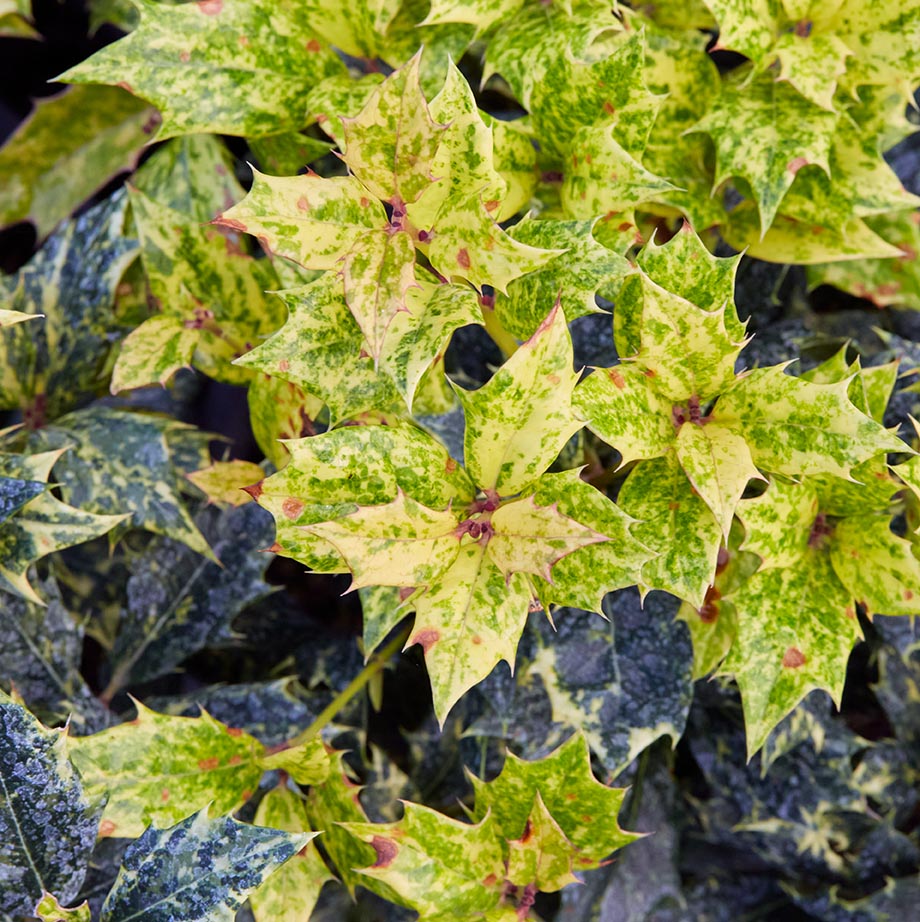Plant Focus: Osmanthus x burkwoodii
Watch your landscape flourish with this fragrant, evergreen shrub
Osmanthus—also known as sweet olive—is a genus of around 30 plant species from the Oleaceae family. Originating from China, Japan and the Himalayas, Osmanthus is beautiful all year round, with its unique, evergreen foliage and highly scented, cream or white flowers.
A small to medium, slow-growing shrub, Osmanthus is very suitable for hedging or topiary styling, and the slow growth makes it easy to maintain. Some varieties of Osmanthus foliage are similar to that of Holly, but have softer edges.
Osmanthus can reach up to 3m in height, and is quite a slow-growing plant; it can take around a year or two to fully establish. Fairly easy-going, Osmanthus thrives in both sun or partially shaded areas, and prefers well-drained soils.
Fun Fact: Osmanthus’ fragrance is often used as an ingredient in perfumes, as it’s believed to give a calming and relaxing effect.
Key Characteristics of Osmanthus:
✓ Evergreen
✓ Dense, rounded shrub
✓ Grows up to 3m in height
✓ Slow-growing
✓ Highly scented
✓ Flowers in spring
✓ Fully hardy
✓ Full sun or partial shade preferred
✓ Grows best in well-drained, fertile soils
✓ Best pruned in late winter or early spring

Osmanthus x burkwoodii
Did you know?: In Greek, the name Osmanthus comes from “osme”, meaning fragrance, and “anthos”, meaning flower.
Our favourite variety from the Osmanthus genus is Osmanthus x burkwoodii—a popular, dense, rounded, evergreen shrub with dark green, leathery leaves. Osmanthus x burkwoodii blooms clusters of white, jasmine scented flowers in spring, followed by black fruits in autumn.
Growing up to 3m in height and spreading up to 4m, this slow growing plant can be pruned to a formal, neat style or a variety of topiary shapes—such as balls or domes. Osmanthus x burkwoodii makes a lovely feature plant for hedging, borders or woodland gardens.
Fully hardy, Osmanthus x burkwoodii suits exposed or sheltered spots, but shouldn’t be exposed to strong North or East winds, as this can damage the foliage. Full sun or partial shade are preferred, although more flowers will bloom in a sunny spot.
Osmanthus x burkwoodii thrives in any well-drained, fertile soil, so isn’t a particularly fussy plant. When it comes to maintenance, Osmanthus x burkwoodii is easy to maintain and is best pruned in late winter or early spring, by removing any dead branches. A great benefit of Osmanthus x burkwoodii is that it’s generally unaffected by pests and diseases.
Another well-loved variety from the Osmanthus genus is Osmanthus heterophyllus ‘Goshiki’—commonly known as holly olive ‘Goshiki’. Prized for its coarsely-spined, holly-like, marbled foliage, Osmanthus heterophyllus ‘Goshiki’ is a unique plant and will make a statement in your landscape. Osmanthus heterophyllus ‘Goshiki’ blooms clusters of tubular, white flowers throughout summer and autumn, with occasional blue-black fruits during autumn.
Osmanthus heterophyllus ‘Goshiki’ is a slow-growing, evergreen shrub with a dense, rounded habit, that looks fantastic when used for hedging and screening, as well as in flower beds or borders. Preferring moist, well-drained, acidic soils, Osmanthus heterophyllus ‘Goshiki’ thrives in full sun or partially shaded spots. As with Osmanthus x burkwoodii, Osmanthus heterophyllus ‘Goshiki’ is generally pest and disease free, making it a great choice as part of your landscape plan.
If you need any advice or more information on Osmanthus—or other plants—contact one of our G Team experts.

Osmanthus x burkwoodii

